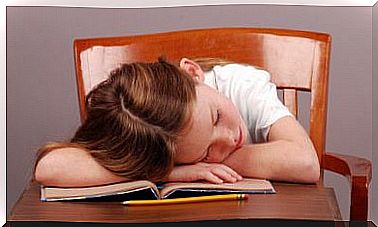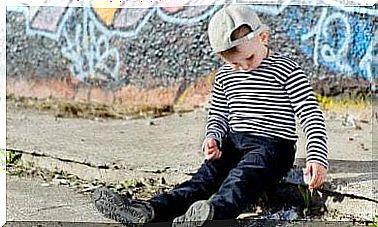Advantages And Disadvantages Of Nap For Children

The nap for children is almost a tradition in many families and many communities. Despite this, it often happens that the little ones do not welcome it, since they see it as an interruption of what could be a moment of play for them. For parents, we recommend that you know the pros and cons of sleeping for babies.
In general, this is a subject that varies a lot according to the habits of each family. In cases where parents are used to rest after lunch, children are very likely to imitate this behavior and it becomes a habit for them.
In other cases, especially in families where daytime rest is generally ignored, it may be that children totally reject sleeping in broad daylight. Which position is the most recommendable? Below, we will give you all the details on the advantages and disadvantages of nap for children.
Benefits of nap for children
1. Recover your energies
While it is the basic principle that can come to anyone’s mind, it doesn’t stop being a great truth. Children are restless, playful and full of energy by their nature. Obviously, every now and then they need to recharge their energy, which runs out as the day goes by.
Children don’t exhaust their resources just by running and playing. Childhood is a phase of great cognitive learning, and this too requires energy. Consequently, the corresponding rest is necessary. Napping helps meet this need.
2. It cheers them up
Among the many benefits of having children take a nap, we find many related to their state of mind. This short sleep helps to ensure that the little ones are relieved of tension and have less anxiety.
Furthermore, as they arrive less exhausted in the evening, they will sleep without suffering from the annoying effects of excessive fatigue. Therefore, they will rest better even at night.

3. Enhance memory and learning
While we sleep, a series of very complex neurological processes take place in the brain which, after all, are responsible for the fact that we “process” the information previously gathered.
In children, these processes are much more necessary and important, as they are in a phase in which their mind “shapes” itself according to various factors, such as the environment and genetic predisposition.
4. Improve their performance
Almost as an inevitable consequence of everything we have just said, the fact that children take a nap is extremely positive for their performance in school, sports and other activities they undertake. It’s simple: in addition to having a clearer mind, they will be able to count on more energy and more positivity to face every situation. This equation hardly leads to a negative result.
Disadvantages of nap for babies
1. It is extremely counterproductive if it is too extensive
Anything in excess is bad, and naps are not the exception to the rule. According to some articles published in recent years, afternoon naps of over 30 minutes – a value that could be slightly exceeded in children – negatively affect night rest. In this way, sleep disorders such as insomnia, narcolepsy and others can appear. We therefore recommend that you monitor and regulate the duration of daytime naps.
2. It can cause headaches
The so-called hypnic headache mainly affects elderly people, but it can also appear in children genetically predisposed to suffer from it. Its intensity is usually moderate, but it will be enough to wipe out any advantage of these restorative rests.
3. It could promote problems in the case of certain respiratory diseases
For example, people with chronic obstructive pulmonary disease (COPD) cannot sleep during the day. This is because you may have muscle relaxation that affects normal breathing. The consequences of this would be poor blood oxygenation, constant fatigue and respiratory failure.
However, it is not a risk factor for all children; it is more of a problem for specific cases, which in any case must be taken into consideration.

Tips for giving babies a nap
Finally, it is necessary to give some recommendations to follow when trying to get children accustomed to the nap:
- Do not force them : it will not help to “push” them to do so. For them to rest, the willingness to do so is a fundamental requirement.
- Create a suitable environment: if you put your baby to bed while you, your partner and siblings are making noise all over the house, it is unlikely that he will be able to fall asleep. You need to create a calm, low-light environment.
- Make it a habit: as is usually the case, we humans are “slaves to our habits”. If the child adopts a rhythm of life that includes resting at a certain time, each time it will be less difficult for him to do so.
In conclusion, the decision will be made by the parents and the children themselves. The most important thing is to make sure you are doing the best for your little one’s well-being.









